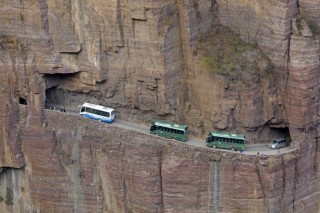The Resources Of Earth
Geography is the study of the earth's physical and human features, including natural resources, climate, culture, and society.
Geographic resources refer to the natural features of the earth that can be used for human benefit. These resources are divided into six major categories: water resources, mineral resources, energy resources, biological resources, land resources, and air resources.
Each of these categories has unique characteristics that determine how they are used and managed. In this article, we will explore each of these categories of geographic resources in more detail.
1. Water Resources
Water is a vital resource that is essential for human survival and the functioning of many industries. It is a renewable resource that is replenished through the water cycle. Water resources include rivers, lakes, oceans, and groundwater.
They are used for irrigation, drinking, industrial processes, and recreational activities. However, water resources are not evenly distributed across the world, and some areas face water scarcity. Therefore, the management of water resources is critical to ensure their sustainability and availability.
2. Mineral Resources
Mineral resources are non-renewable resources that are formed through geological processes. They include metals, non-metals, and energy minerals. Examples of minerals include iron, copper, gold, coal, and petroleum. These resources are used in construction, manufacturing, and energy production.
The extraction and use of mineral resources can have significant environmental impacts, including soil erosion, deforestation, and pollution. Therefore, their management should focus on minimizing these impacts and promoting sustainable practices.
3. Energy Resources
Energy resources are essential for the functioning of modern societies. They include fossil fuels, such as coal, petroleum, and natural gas, as well as renewable energy sources, such as wind, solar, and hydroelectric power. Energy resources are used for transportation, heating, electricity generation, and industrial processes.
The use of fossil fuels has significant environmental impacts, including air pollution and greenhouse gas emissions, which contribute to climate change. Therefore, there is an increasing need to transition to renewable energy sources to reduce these impacts and promote sustainability.
4. Biological Resources
Biological resources refer to the living organisms that inhabit the earth. They include plants, animals, and microorganisms. Biological resources are used for food, medicine, and other products.
However, the exploitation of biological resources can lead to biodiversity loss and habitat destruction, which can have negative impacts on ecosystems and human well-being. Therefore, the management of biological resources should focus on conservation and sustainable use.
5. Land Resources
Land resources include the physical features of the earth's surface, including soil, forests, and water bodies. Land resources are used for agriculture, forestry, mining, and construction.
However, the exploitation of land resources can have significant environmental impacts, including deforestation, soil erosion, and loss of biodiversity. Therefore, the management of land resources should focus on promoting sustainable practices and minimizing negative impacts.
6. Air Resources
Air resources include the earth's atmosphere and the gases it contains. Air resources are used for breathing, transportation, and industrial processes.
However, the release of pollutants into the air can have significant environmental impacts, including air pollution, climate change, and ozone depletion. Therefore, the management of air resources should focus on reducing emissions and promoting sustainable practices.
Geographic resources are essential for human well-being and the functioning of modern societies. However, the exploitation of these resources can have significant environmental impacts, including pollution, climate change, and habitat destruction. Therefore, their management should focus on promoting sustainable practices and minimizing negative impacts.
The six major categories of geographic resources on Earth are water resources, mineral resources, energy resources, biological resources, land resources, and air resources. Each of these categories has unique characteristics that determine how they are used and managed.
You may like:



